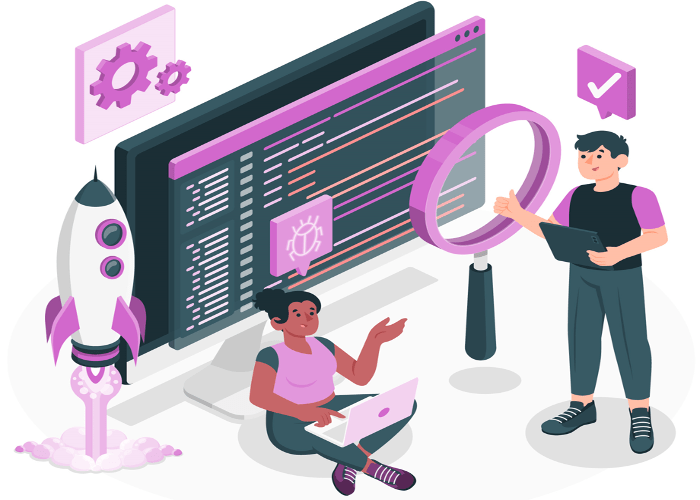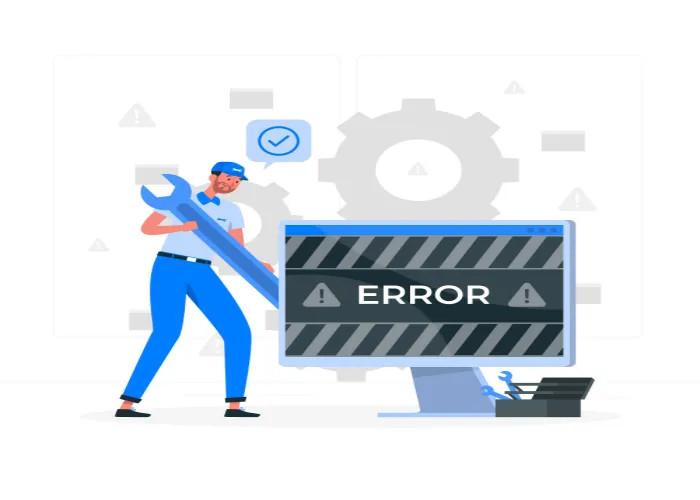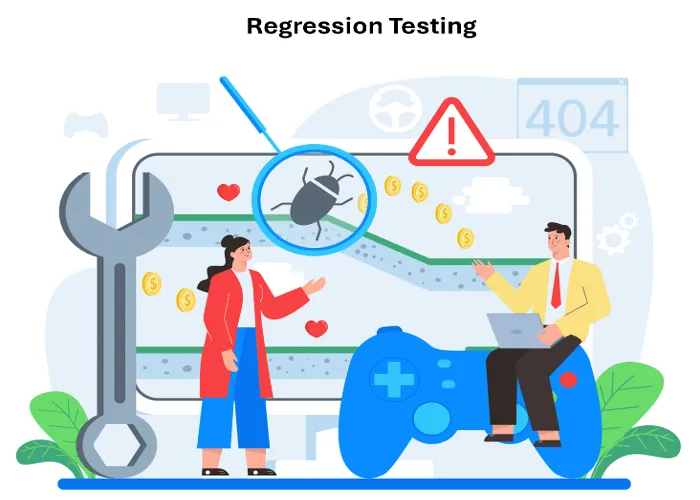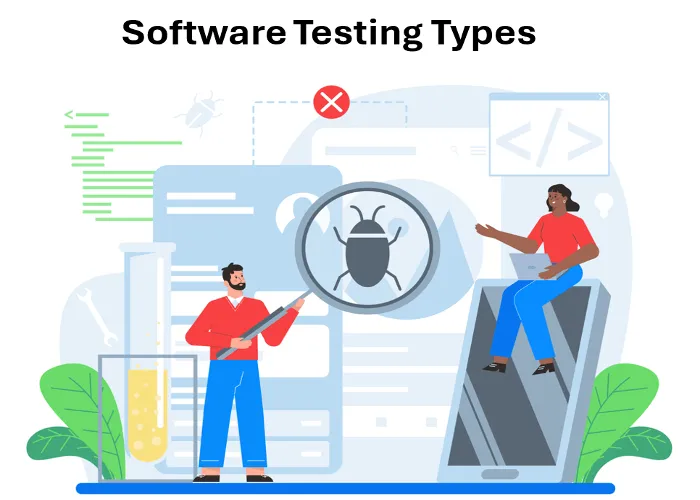Functional Testing Know the Fundamentals in the SDLC

Introduction
Functional testing is a crucial aspect of software testing that ensures an application performs as expected according to its functional requirements. It verifies that each feature of the software operates in conformance with the required specifications. This type of testing mainly involves black-box testing, where the tester is unaware of the internal workings of the system.
What is Functional Testing?
Functional testing validates the behavior of the software by focusing on its functionality rather than its internal logic or structure. It checks whether the application is doing what it is supposed to do by providing input and verifying the output against expected results.
Key points about functional testing:
- It tests user interactions and the system’s response.
- It validates business requirements.
- It is conducted from an end-user perspective.
- It involves black-box testing techniques, meaning the testers are unaware of how the application is built or structured.
Main Types of Functional Testing
Functional testing can be categorized into several types based on the purpose and scope of testing. Here are the main types along with the job roles typically responsible for each:
1. Unit Testing
- Purpose: Tests individual units or components of a software application.
- Focus: Validates the functionality of a specific section of code, typically at the function or method level.
- Job Role: Software Developers or Software Engineers
- Example: Testing a calculator app’s addition method to ensure it returns the correct sum.
2. Integration Testing
- Purpose: Tests the interactions between integrated units or components.
- Focus: Ensures that combined components work together as expected.
- Job Role: Software Developers, Integration Testers, or QA Engineers
- Example: Verifying data flow between a frontend form and the backend database.
3. System Testing
- Purpose: Evaluates the complete and integrated software system.
- Focus: Ensures the system meets specified requirements.
- Job Role: QA Engineers or Software Testers
- Example: Testing an e-commerce website’s complete order placement process.
4. Sanity Testing
- Purpose: Checks for basic functionality after a minor change or bug fix.
- Focus: Confirms that the new functionality works as expected.
- Job Role: QA Engineers or Software Testers
- Example: Verifying a fixed login issue without performing a full regression.
5. Smoke Testing
- Purpose: Conducted to check whether the critical functionalities of the application are working.
- Focus: Ensures the stability of the software for further testing.
- Job Role: QA Engineers, Software Testers, or DevOps Engineers (in CI/CD pipelines)
- Example: Confirming the successful launch of a web application’s homepage.
6. User Acceptance Testing (UAT)
- Purpose: Validates the system from the end-user’s perspective.
- Focus: Confirms that the system meets business requirements and is ready for deployment.
- Job Role: End Users, Business Analysts, or Product Owners
- Example: End-users testing a new feature in a mobile banking app.
7. Regression Testing
- Purpose: Ensures that recent code changes have not negatively impacted the existing functionality of the software.
- Focus: Verifies that previously working features still function correctly after updates or bug fixes.
- Job Role: QA Engineers, Software Testers, or Automation Test Engineers
- Example: Re-running test cases on a web application after a new feature is added to ensure no existing functionality is broken.
Positive and Negative Functional Testing Approaches
Positive and negative testing are two fundamental approaches used in functional testing to ensure the robustness and reliability of software applications.
Positive Testing
- Description: Positive testing validates that the software works as expected when given valid and correct input data. It verifies that the system behaves as intended under normal conditions.
- Example: Entering a valid username and password on a login form to check if the user is successfully redirected to the dashboard.
Negative Testing
- Description: Negative testing ensures that the software gracefully handles invalid or unexpected input data. It verifies that the system does not crash or produce incorrect results under erroneous conditions.
- Example: Entering an invalid password or leaving the username field blank on a login form to check if appropriate error messages are displayed.
By performing both positive and negative testing, testers can validate the application’s behavior under normal and exceptional scenarios, ensuring a more robust and user-friendly product.
Functional Testing Techniques
Functional testing techniques involve designing test cases and scenarios to ensure comprehensive coverage. Here are the commonly used techniques:
1. Equivalence Partitioning
- Description: Divides input data into equivalent partitions where the behavior is expected to be the same.
- Example: Testing input fields with valid and invalid email formats.
2. Boundary Value Analysis (BVA)
- Description: Tests the boundaries between partitions, focusing on edge cases.
- Example: Checking input limits, like a password field accepting 8 to 20 characters.
3. Decision Table Testing
- Description: Uses decision tables to represent complex business rules and test scenarios.
- Example: Validating user roles and permissions in an admin panel.
4. State Transition Testing
- Description: Tests the system’s behavior by transitioning between different states based on events or inputs.
- Example: Checking the workflow of a ticket booking system from selection to payment.
5. Error Guessing
- Description: Leverages the tester’s experience to guess potential error-prone areas.
- Example: Entering invalid inputs or special characters to test validation rules.
Examples of Functional Testing:
Here are some real-world examples that illustrate the use of functional testing:
Login Functionality Test
Input: Username and Password. Action: Click on the login button. Expected Result: Redirects to the user dashboard if credentials are correct.
Search Feature Test
Input: Keyword in the search bar. Action: Press the search button. Expected Result: Displays relevant search results matching the keyword.
Integrating Functional Testing into the Software Development Lifecycle
Effective functional testing requires seamless integration into the software development lifecycle (SDLC). By incorporating functional testing at various stages of the SDLC, organizations can ensure that software applications meet the desired quality standards and user expectations. Here’s how functional testing can be integrated into the SDLC:
1. Requirements Gathering:
During the requirements gathering phase, functional testing teams should work closely with stakeholders and developers to understand the application’s intended functionality, user stories, and acceptance criteria. This information serves as the foundation for creating comprehensive test cases.
2. Design and Development:
As the software application is being designed and developed, functional testing teams should collaborate with developers to identify potential risks, review design documents, and participate in code reviews. This proactive approach helps catch defects early in the development process, reducing the overall cost of fixing them.
3. Testing and Deployment:
Throughout the testing phase, functional testing teams should execute test cases, report and track defects, and ensure that the software application meets the specified requirements. Once the testing process is complete, the application can be deployed to the production environment with confidence.
4. Maintenance and Enhancements:
Even after the initial deployment, functional testing remains crucial. As the software application evolves with new features or bug fixes, functional testing teams should continue to validate the application’s behavior and performance to maintain its quality and stability.
Best Practices in Functional Testing
Functional testing is a cornerstone of quality assurance, ensuring that every feature performs as intended. By following best practices, teams can streamline their testing process, enhance reliability, and catch potential issues before they impact users.
Here are some key best practices for functional testing:
1. Early Testing:
Start testing as early as possible in the software development lifecycle to catch defects and issues sooner, reducing the cost of fixing them later.
2. Clear Requirements:
Ensure that the requirements are well-defined, clear, and agreed upon by stakeholders before testing begins. Clear requirements are critical for creating effective test cases.
3. Adopt a Test-Driven Development (TDD) Approach:
Incorporating functional testing early in the development process through a TDD approach can help identify and address defects at the source, reducing the overall cost and time required for testing.
4. Test Planning:
Develop a comprehensive test plan that outlines the testing approach, scope, objectives, resources, and schedules. A well-defined test plan helps in organized and efficient testing.
5. Traceability:
Maintain traceability between requirements, test cases, and defects. This helps in ensuring that all requirements are covered by test cases and allows for better tracking and management of defects.
6. Test Case Design:
Design test cases that are clear, concise, and focused on specific functionalities or scenarios. Use techniques like boundary value analysis, equivalence partitioning, and error guessing to design effective test cases.
7. Prioritize Test Cases:
Focusing on the most critical and high-risk functionalities first, and then expanding the test coverage incrementally, can help optimize the testing process and ensure that the most important aspects of the software are thoroughly validated.
8. Test Data Management:
Manage test data effectively to ensure that it is relevant, representative, and covers a wide range of scenarios. Consider using automated tools or scripts for generating and managing test data.
9. Test Automation:
Automate repetitive and time-consuming test cases to improve efficiency and reduce manual effort. Focus on automating regression tests, smoke tests, and critical functionalities.
10. Continuous Integration and Continuous Testing:
Integrate testing into the continuous integration (CI) and continuous delivery (CD) pipelines to ensure that tests are executed automatically whenever changes are made to the codebase. This promotes early detection of defects and ensures the stability of the software.
11. Defect Management:
Implement a robust defect management process to track, prioritize, and resolve defects efficiently. Clearly document defects with relevant information such as steps to reproduce, severity, and priority.
12. Collaboration and Communication:
Foster collaboration and communication between developers, testers, and other stakeholders throughout the testing process. Encourage feedback, discussion, and knowledge sharing to improve the quality of testing.
13. Environment Management:
Maintain consistent and stable testing environments that closely resemble the production environment. This helps in ensuring that test results are reliable and reproducible.
14. Metrics and Reporting:
Define relevant metrics to measure the effectiveness and progress of testing activities. Generate regular reports to communicate test results, coverage, defects, and other relevant information to stakeholders.
15. Continuous Improvement:
Continuously evaluate and improve the testing process based on lessons learned, feedback, and industry best practices. Foster a culture of learning and adaptation to drive continuous improvement in testing practices.
Some Challenges in Functional Testing
Functional software testing, while crucial for ensuring the quality and reliability of software, it can present several challenges. Here are some key challenges faced in functional software testing:
1. Changing Requirements:
One of the significant challenges is dealing with changing or evolving requirements. As requirements change throughout the development process, it can be challenging to keep test cases updated and aligned with the latest specifications.
2. Test Case Management:
Maintaining a comprehensive and up-to-date set of test cases can be a daunting task, especially for complex software applications with a large number of features and functionalities.
3. Test Data Management:
Generating, managing, and maintaining the appropriate test data for various test scenarios can be time-consuming and resource-intensive.
4. Test Automation:
Implementing and maintaining effective test automation can be a complex and ongoing process, requiring technical expertise and continuous optimization.
5. Cross-Browser and Cross-Platform Testing:
Ensuring the software application functions correctly across different browsers, operating systems, and devices can be a significant challenge, especially for web-based applications.
6. Time Constraints:
Tight project schedules and deadlines often limit the time available for thorough testing. Testers may feel pressured to complete testing quickly, leading to insufficient coverage and potentially overlooking critical defects.
7. Complexity of Systems:
Modern software systems are becoming increasingly complex, with intricate architectures, integrations, and dependencies. Testing such complex systems requires comprehensive test coverage and robust testing strategies.
8. Test Data Management:
Managing test data, especially in systems with large datasets or complex data requirements, can be challenging. Ensuring the availability of relevant and representative test data for various scenarios requires careful planning and coordination.
9. Resource Constraints:
Limited resources, including budget, manpower, and testing tools, can pose significant challenges for functional testing. Organizations may struggle to allocate sufficient resources to testing activities, impacting the thoroughness and effectiveness of testing efforts.
10. Regression Testing:
As software evolves and new features are added, regression testing becomes increasingly time-consuming and complex. Ensuring that existing functionalities remain intact while introducing changes requires extensive regression testing, which can strain resources and delay release cycles.
11. Test Environment Setup:
Setting up and maintaining test environments that accurately mimic production environments can be challenging. Differences between test and production environments may lead to discrepancies in test results and hinder the detection of environment-specific issues.
12. Test Automation Challenges:
While test automation offers benefits such as efficiency and repeatability, it also presents challenges. Maintaining and updating test automation scripts, dealing with flakiness, and achieving adequate test coverage are common challenges in test automation.
13. Communication and Collaboration:
Effective communication and collaboration between stakeholders, including developers, testers, and business analysts, are essential for successful testing. Poor communication and misalignment of expectations can lead to misunderstandings, delays, and quality issues.
14. Non-functional Testing Considerations:
Functional testing focuses on verifying the correctness of software functionalities but may overlook non-functional aspects such as performance, security, and usability. Ensuring comprehensive testing coverage across both functional and non-functional requirements is essential for delivering high-quality software.
How to Address the Challenges of Functional Testing
Addressing the challenges of functional testing requires a combination of strategies, processes, and tools to ensure effective testing and high-quality software delivery. Here are some approaches to address these challenges:
1. Requirements Management:
Establish clear and well-defined requirements early in the development process. Encourage collaboration between stakeholders to ensure a shared understanding of requirements and minimize changes later in the development cycle.
2. Agile and Iterative Development:
Adopt agile methodologies and iterative development practices to accommodate changing requirements and facilitate continuous testing throughout the development process. Break down development tasks into smaller increments to enable more focused and manageable testing efforts.
3. Test Planning and Prioritization:
Develop comprehensive test plans that prioritize testing activities based on risk, criticality, and business impact. Allocate resources and effort effectively to areas of the application that are most critical or prone to defects.
4. Automation and Tooling:
Invest in test automation tools and frameworks to automate repetitive and time-consuming testing tasks. Automate regression tests, smoke tests, and critical functionalities to increase testing efficiency and coverage while reducing manual effort.
5. Continuous Integration and Continuous Testing:
Implement continuous integration (CI) and continuous testing practices to integrate testing into the development pipeline. Automate the execution of tests whenever changes are made to the codebase, enabling early detection of defects and ensuring rapid feedback to developers.
6. Test Data Management:
Develop strategies for effective test data management, including data generation, provisioning, and masking. Utilize tools and techniques to generate and manage test data efficiently, ensuring that it is relevant, representative, and privacy-compliant.
7. Environment Management:
Establish consistent and stable testing environments that closely resemble production environments. Use containerization, virtualization, or cloud-based solutions to provision and manage test environments dynamically, reducing setup time and improving consistency.
8. Collaboration and Communication:
Foster a culture of collaboration and communication between stakeholders, including developers, testers, business analysts, and product owners. Encourage regular meetings, discussions, and feedback sessions to align expectations, address issues, and drive continuous improvement.
9. Training and Skill Development:
Invest in training and skill development programs to enhance the expertise and proficiency of testing teams. Provide training on testing methodologies, tools, automation frameworks, and emerging technologies to improve testing capabilities and efficiency.
10. Risk-based Testing:
Prioritize testing efforts according to the risk analysis and impact assessment. Focus testing resources on areas of the application that are most critical, complex, or prone to defects, while balancing coverage across different functional and non-functional requirements.
11. Continuous Improvement:
Continuously evaluate and improve testing processes, practices, and tools based on lessons learned, feedback, and industry best practices. Encourage experimentation, innovation, and adaptation to address evolving challenges and optimize testing outcomes. By implementing these strategies and practices, organizations can overcome the challenges of functional software testing and deliver high-quality software that meets user expectati
Conclusion
Functional testing plays a vital role in delivering high-quality software that meets user expectations. It focuses on verifying the functional aspects of the application, ensuring that each feature works as intended. By leveraging various types and techniques of functional testing, software teams can build robust and reliable applications.
As a software testing engineer, mastering functional testing techniques and understanding their applications is essential to ensuring the quality and performance of your software projects.





🗨️ Reader Comments